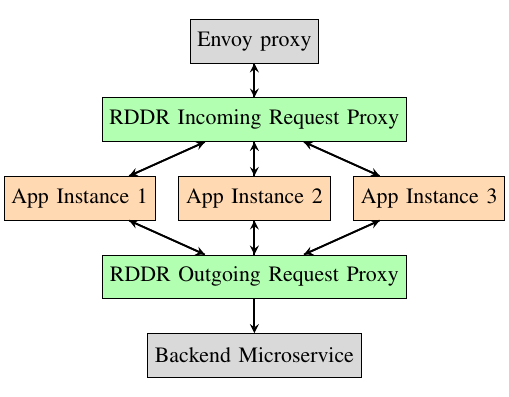RDDR Home¶
Introduction¶
RDDR is an N-Versioning proxy that can identify bugs in your cloud microservice and prevent them from being exploited.
RDDR sits in front of N variants of any microservice and proxies their incoming and outgoing traffic. It replicates incoming traffic to each instance and then diffs their responses; it also diffs their outgoing requests and replicates the response to each of them. If any difference in behavior is seen among the variants, RDDR will block the response.

RDDR Deployment Block Diagram¶
RDDR stands for:
- Replicate
Incoming requests are replicated to each variant of the microservice.
- De-noise
RDDR filters random noise from their responses.
- Diff
RDDR diffs the remainder of their responses to detect difference in behavior.
- Respond
If no differences are detected, the merged response is returned to the requester.
Read Quick Start to get started using RDDR.
RDDR was developed at the Spark Research Lab at the University of Texas at Austin.
Scope¶
This documentation will cover the organization of the RDDR Python module. If time permits, I will also document the Kubenernetes deployment I have used for testing. Kubernetes is not required. You can deploy RDDR outside of a container and point it at your replicated instances however they are deployed.